Considering Well-to-Wheels Analysis in Control Design: Regenerative Suspension Helps to Reduce Greenhouse Gas Emissions from Battery Electric Vehicles
Abstract
1. Introduction
1.1. Regenerative Suspension
1.2. Life Cycle Assessment (LCA)
1.3. Contribution of This Paper
2. Methods
2.1. Boundary and Modelling of WTW GHG Emissions
2.2. Modelling of Vehicle Specification
2.2.1. Modelling of the Powertrain
2.2.2. Modelling of Regenerative Suspension
2.3. Control Design of Regenerative Suspension
3. Results
3.1. Control Parameters of Regenerative Suspension
3.2. A Case Study: WLTC and C Level Road in China 2016
3.3. Comparison Study of Different Cases
4. Discussion and Conclusion
Author Contributions
Funding
Acknowledgments
Conflicts of Interest
References
- Wu, Z.; Wang, M.; Zheng, J.; Sun, X.; Zhao, M.; Wang, X. Life cycle greenhouse gas emission reduction potential of battery electric vehicle. J. Clean. Prod. 2018, 190, 462–470. [Google Scholar] [CrossRef]
- Wang, D.; Zamel, N.; Jiao, K.; Zhou, Y.; Yu, S.; Du, Q.; Yin, Y. Life cycle analysis of internal combustion engine, electric and fuel cell vehicles for China. Energy 2013, 59, 402–412. [Google Scholar] [CrossRef]
- Li, N.; Zhang, J.; Zhang, S.; Hou, X.; Liu, Y. The influence of accessory energy consumption on evaluation method of braking energy recovery contribution rate. Energy Convers. Manag. 2018, 166, 545–555. [Google Scholar] [CrossRef]
- Múčka, P. Energy-harvesting potential of automobile suspension. Veh. Syst. Dyn. 2016, 54, 1651–1670. [Google Scholar] [CrossRef]
- Zhang, Y.; Guo, K.; Wang, D.; Chen, C.; Li, X. Energy conversion mechanism and regenerative potential of vehicle suspensions. Energy 2016, 119, 961–970. [Google Scholar] [CrossRef]
- Audi’s New Suspension Tech Can Generate Electricity From Movement. 2016. Available online: https://www.cnet.com/roadshow/news/audis-new-suspension-tech-can-generate-electricity-from-movement/ (accessed on 11 August 2016).
- Karnopp, D. Permanent magnet linear motors used as variable mechanical dampers for vehicle suspensions. Veh. Syst. Dyn. 1989, 18, 187–200. [Google Scholar] [CrossRef]
- Suda, Y.; Nakadai, S.; Nakano, K. Hybrid suspension system with skyhook control and energy regeneration (Development of self-powered active suspension). Veh. Syst. Dyn. 1998, 29, 619–634. [Google Scholar] [CrossRef]
- Zuo, L.; Scully, B.; Shestani, J.; Zhou, Y. Design and characterization of an electromagnetic energy harvester for vehicle suspensions. Smart Mater. Struct. 2010, 19, 1007–1016. [Google Scholar] [CrossRef]
- Montazeri-Gh, M.; Soleymani, M. Investigation of the energy regeneration of active suspension system in hybrid electric vehicles. IEEE Trans. Ind. Electron. 2010, 57, 918–925. [Google Scholar] [CrossRef]
- Shi, D.; Pisu, P.; Chen, L.; Wang, S.; Wang, R. Control design and fuel economy investigation of power split HEV with energy regeneration of suspension. Appl. Energy 2016, 182, 576–589. [Google Scholar] [CrossRef]
- Pham, T.H.; Jacob, J.; Wilkins, S.; Lauwerys, C.; Dhaenset, M. Integrated model for battery Electric Vehicles with energy harvesting active suspension system. In Proceedings of the Twelfth International Conference on Ecological Vehicles and Renewable Energies, IEEE, Monte Carlo, Monaco, 11–13 April 2017. [Google Scholar] [CrossRef]
- Zhang, Z.; Zhang, X.; Chen, W.; Rasim, Y.; Salman, W.; Pan, H.; Yuan, Y.; Wang, C. A high-efficiency energy regenerative shock absorber using supercapacitors for renewable energy applications in range extended electric vehicle. Appl. Energy 2016, 178, 177–188. [Google Scholar] [CrossRef]
- Hawkins, T.R.; Singh, B.; Majeau-Bettez, G.; Strømman, A.H. Comparative environmental life cycle assessment of conventional and electric vehicles. J. Ind. Ecol. 2012, 17, 53–64. [Google Scholar] [CrossRef]
- Qiao, Q.; Zhao, F.; Liu, Z.; Jiang, S.; Hao, H. Cradle-to-gate greenhouse gas emissions of battery electric and internal combustion engine vehicles in China. Appl. Energy 2017, 204, 1399–1411. [Google Scholar] [CrossRef]
- Yuan, X.; Li, L.; Gou, H.; Dong, T. Energy and environmental impact of battery electric vehicle range in China. Appl. Energy 2015, 157, 75–84. [Google Scholar] [CrossRef]
- Lewis, A.M.; Kelly, J.C.; Keoleian, G.A. Vehicle lightweighting vs. electrification: Life cycle energy and GHG emissions results for diverse powertrain vehicles. Appl. Energy 2014, 126, 13–20. [Google Scholar] [CrossRef]
- Zackrisson, M.; Avellán, L.; Orlenius, J. Life cycle assessment of lithium-ion batteries for plug-in hybrid electric vehicles—Critical issues. J. Clean. Prod. 2010, 18, 1519–1529. [Google Scholar] [CrossRef]
- Lee, D.Y.; Thomas, V.M. Parametric modeling approach for economic and environmental life cycle assessment of medium-duty truck electrification. J. Clean. Prod. 2017, 142, 3300–3321. [Google Scholar] [CrossRef]
- Miller, I.; Gencer, E.; Vogelbaum, H.S.; Brown, P.R.; Torkamani, S.; O’Sullivan, F.M. Parametric modeling of life cycle greenhouse gas emissions from photovoltaic power. Appl. Energy 2019, 238, 760–774. [Google Scholar] [CrossRef]
- Yao, Y.; Huang, R. A Parametric life cycle modeling framework for identifying research development priorities of emerging technologies: A case study of additive manufacturing. In Proceedings of the 26th CIRP Conference on Life Cycle Engineering (LCE) Purdue University, West Lafayette, IN, USA, 7–9 May 2019. [Google Scholar]
- Niero, M.; Di Felice, F.; Ren, J.; Manzardo, A.; Scipioni, A. How can a life cycle inventory parametric model streamline life cycle assessment in the wooden pallet sector. Int J. Life Cycle Assess. 2014, 19, 901–918. [Google Scholar] [CrossRef]
- Intergovernmental Panel on Climate Change (IPCC). Fourth Assessment Report (AR4), Working Group 1 (WG1), Chapter 2, Changes in Atmospheric Constituents and in Radiative Forcing, Table 2.14, page 212. 2007. Available online: https://www.ipcc.ch/report/ar4/syr/ (accessed on 30 May 2019).
- Khaligh, A.; Li, Z. Battery, ultracapacitor, fuel cell, and hybrid energy storage systems for electric, hybrid electric, fuel cell, and plug-in hybrid electric vehicles: state of the art. IEEE Trans. Veh. Technol. 2010, 59, 2806–2814. [Google Scholar] [CrossRef]
- Fiori, C.; Ahn, K.; Rakha, H.A. Power-based electric vehicle energy consumption model: Model development and validation. Appl. Energy 2016, 168, 257–268. [Google Scholar] [CrossRef]
- GB/T 7031-2005/ISO 8086:1995. Mechanical vibration-road surface profiles—Reporting of measured data.
- Wu, Z.; Chen, S.; Yang, L.; Zhang, B. Model of road roughness in time domain based on rational function. Trans. Beijing Inst. Tech. 2009, 29, 795–798. [Google Scholar]
- Nakano, K. Combined type self-powered active vibration control of truck cabins. Veh. Syst. Dyn. 2004, 41, 449–473. [Google Scholar] [CrossRef]
- De Gennaro, M.; Paffumi, E.; Martini, G.; Manfredi, U.; Vianelli, S.; Ortenzi, F.; Genovese, N. Experimental test campaign on a battery electric vehicle: Laboratory test results (Part 1). SAE Int. J. Altern. Powertrains 2015, 4, 100–114. [Google Scholar] [CrossRef]
- Rakha, H.A.; Ahn, K.; Moran, K.; Saerens, B.; Van den Bulck, E. Virginia tech comprehensive power-based fuel consumption model: Model development and testing. Transport. Res. Part D Transp. Environ. 2011, 16, 492–503. [Google Scholar] [CrossRef]
- SAE International. Nissan Leaf Vehicle Overview; SAE International: Warrendale, PA, USA, 2011. [Google Scholar]
- Rydh, C.J.; Sandén, B.A. Energy analysis of batteries in photovoltaic systems. Part I: Performance and energy requirements. Energy Convers. Manag. 2005, 46, 1957–1979. [Google Scholar] [CrossRef]
- Szadkowski, B.; Chrzan, P.J.; Roye, D. A study of energy requirements for electric and hybrid vehicles in cities. In Proceedings of the 2003 International Conference on Clean, Efficient and Safe Urban Transport, Gdansk, Poland, 4–6 June 2003. [Google Scholar]
- Suda, Y.; Suematsu, K.; Nakano, K.; Taichi, S. Study on electromagnetic suspension for automobiles-simulations and experiments of performance. In Proceedings of the 5th International Symposium on Advanced Vehicle Control, Ann Arbor, Michigan, USA, 22–24 August 2000; pp. 699–704. [Google Scholar]
- Wolfram, P.; Wiedmann, T. Electrifying Australian transport: Hybrid life cycle analysis of a transition to electric light-duty vehicles and renewable electricity. Appl. Energy 2017, 206, 531–540. [Google Scholar] [CrossRef]
- Bauer, C.; Hofer, J.; Althaus, H.J.; Del Duce, A.; Simons, A. The environmental performance of current and future passenger vehicles: Life cycle assessment based on a novel scenario analysis framework. Appl. Energy 2015, 157, 871–883. [Google Scholar] [CrossRef]
- Miotti, M.; Supran, G.J.; Kim, E.J.; Trancik, J.E. Personal vehicles evaluated against climate change mitigation targets. Environ. Sci. Technol. 2016, 50, 10795–10804. [Google Scholar] [CrossRef]
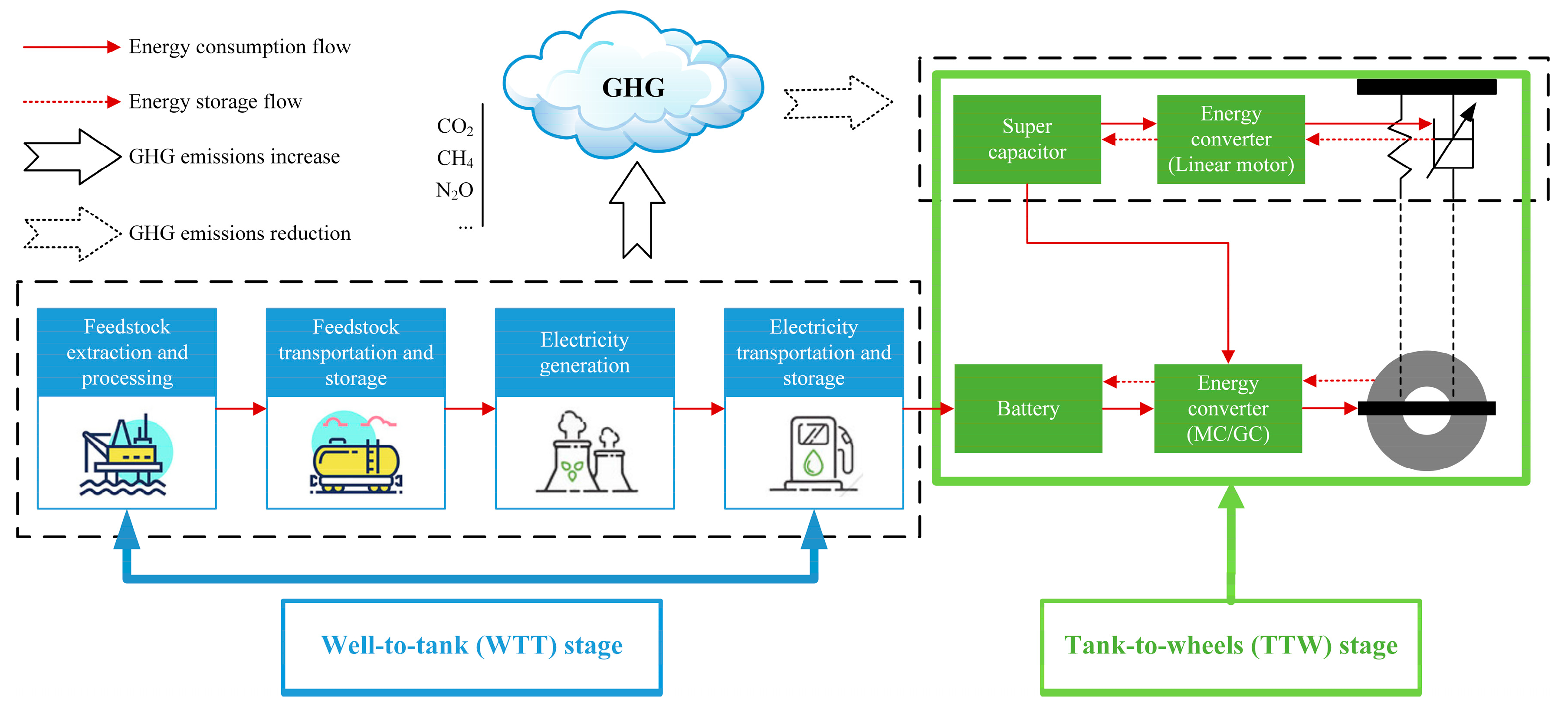
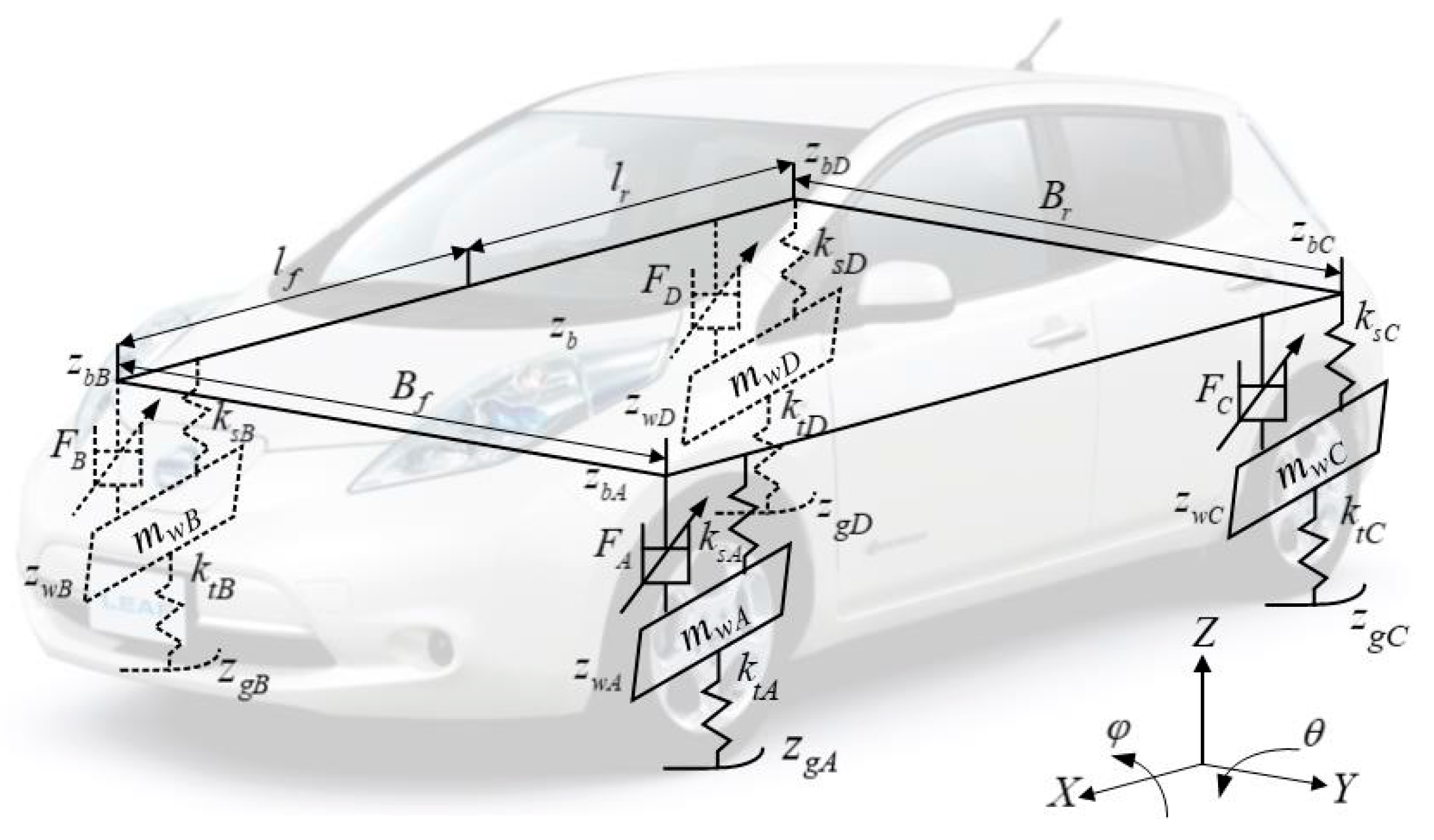
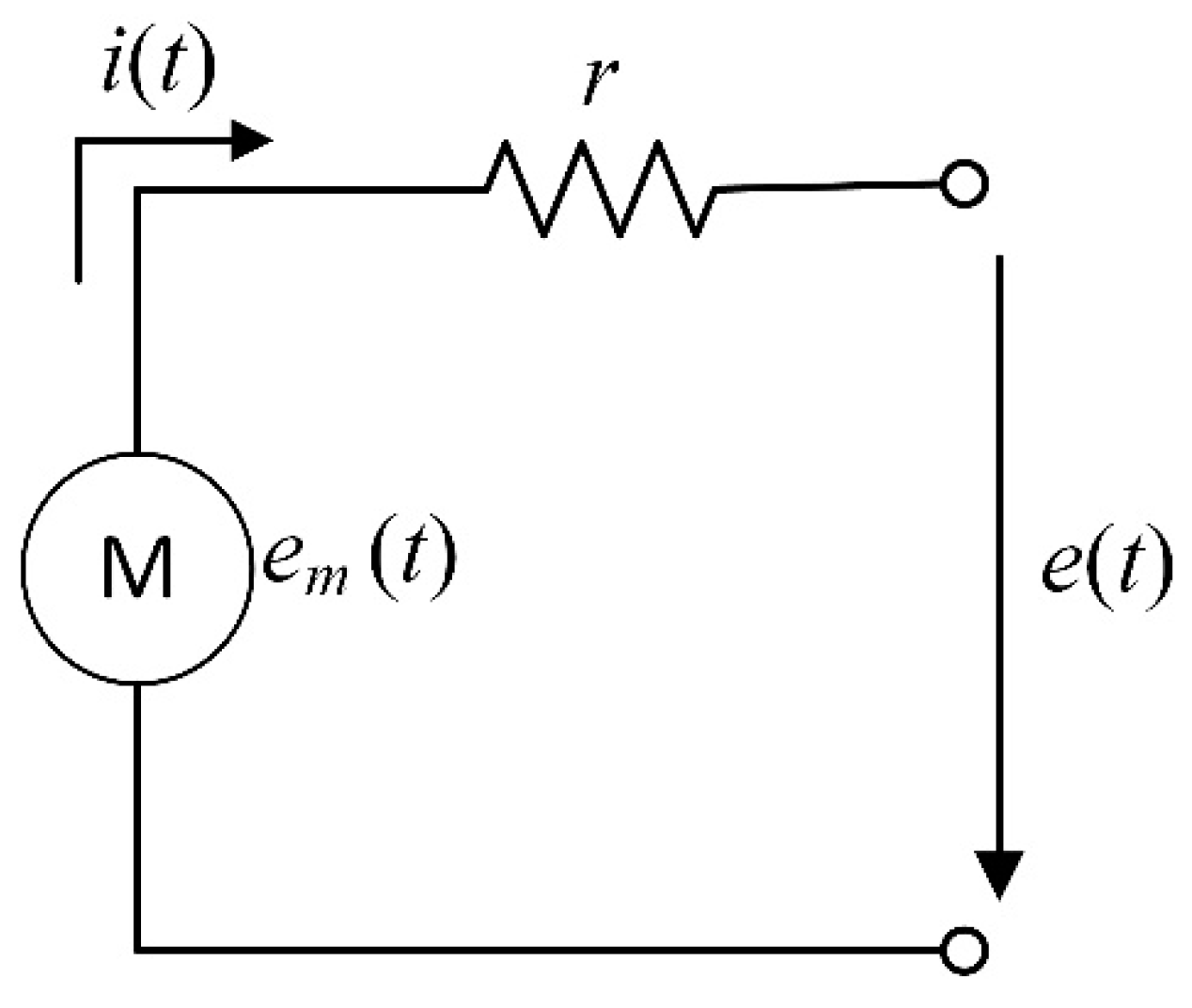
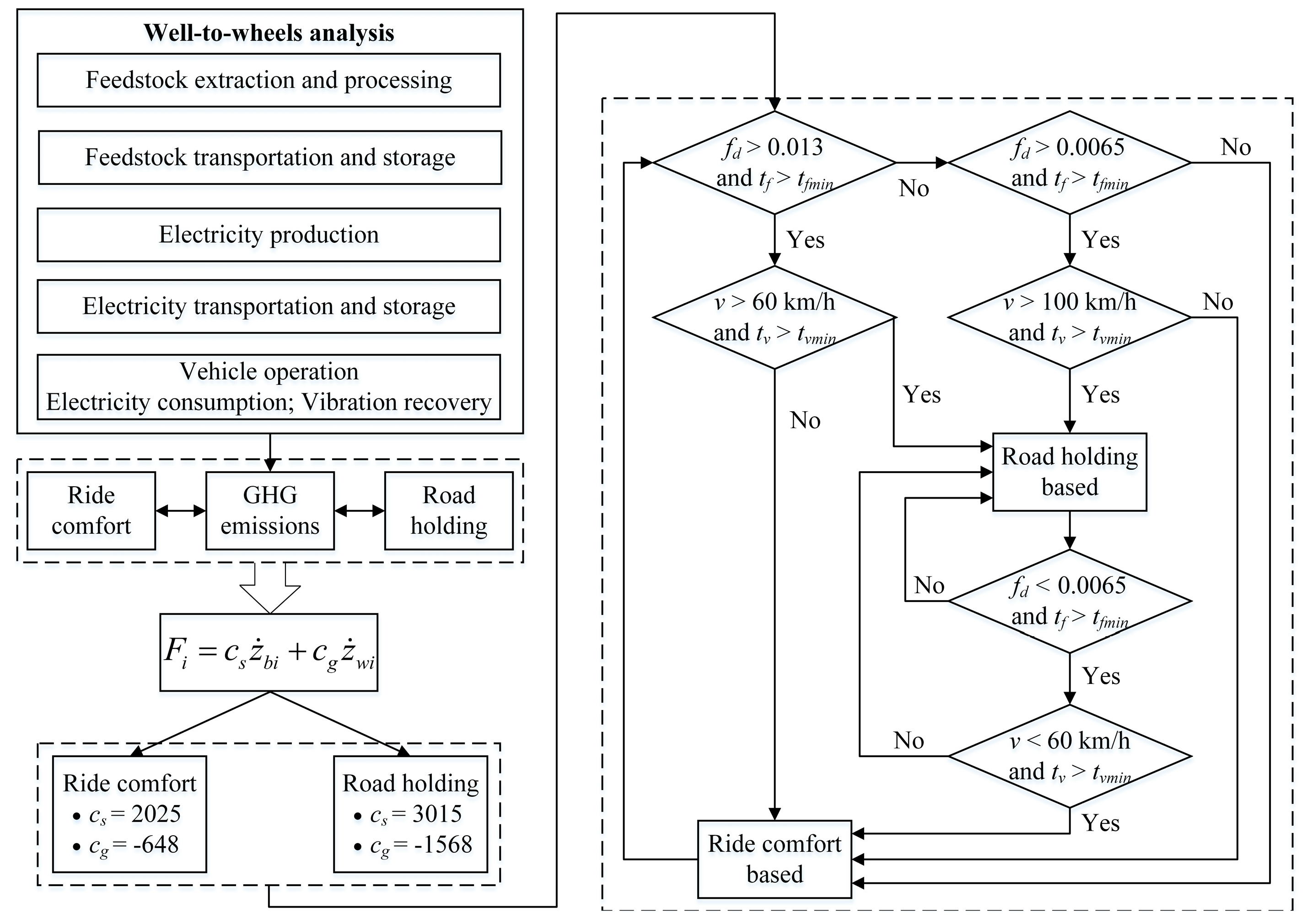
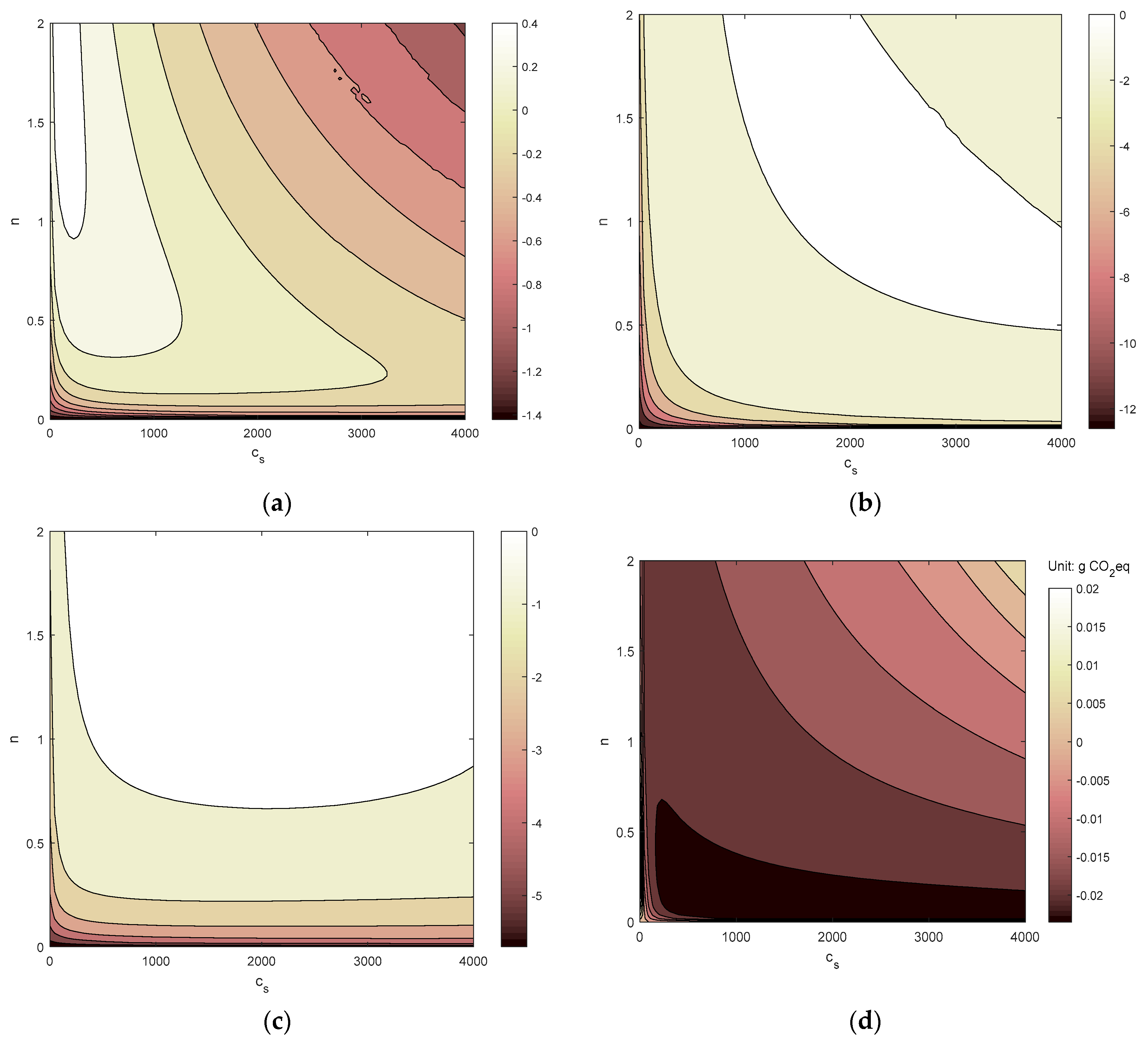

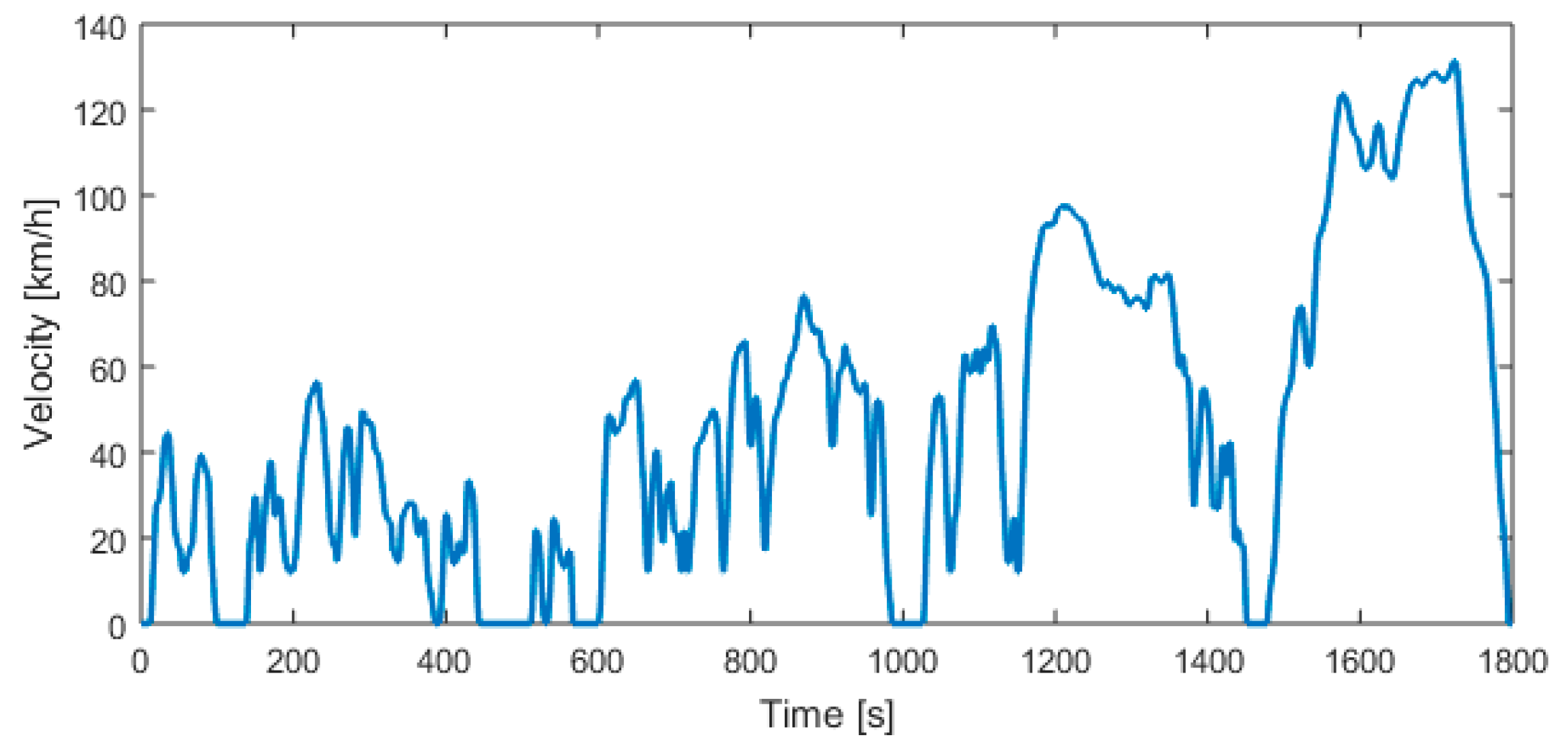
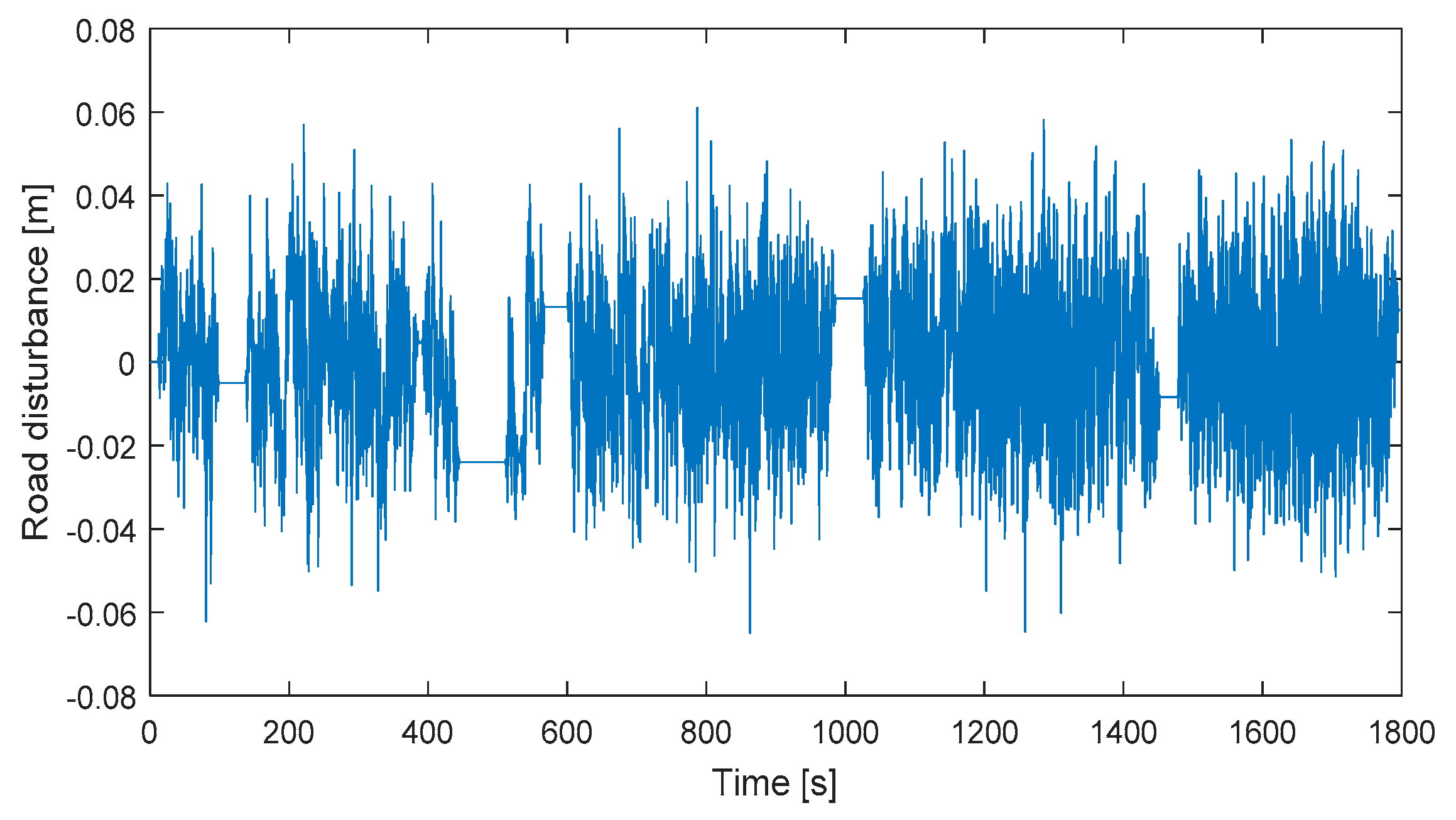

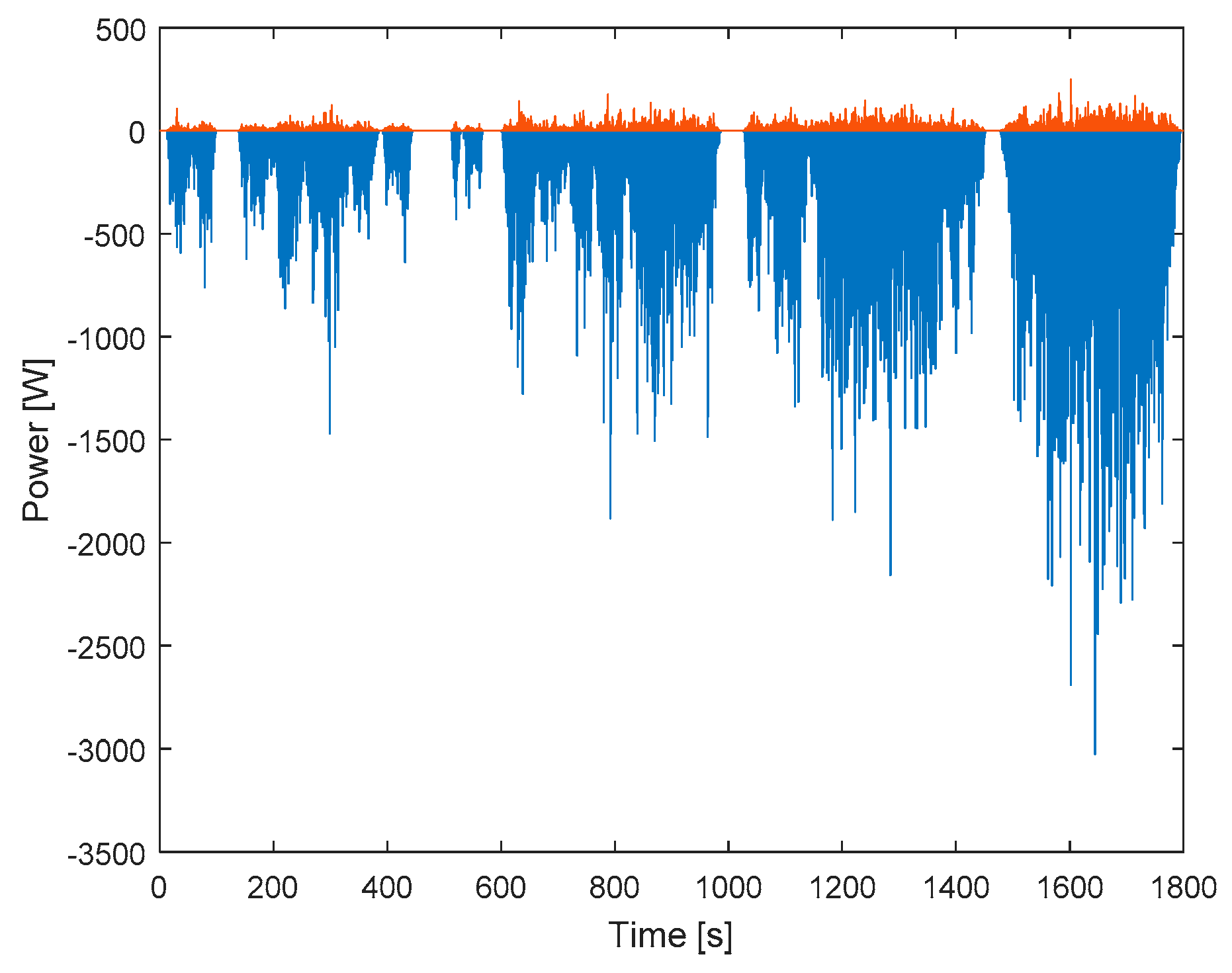

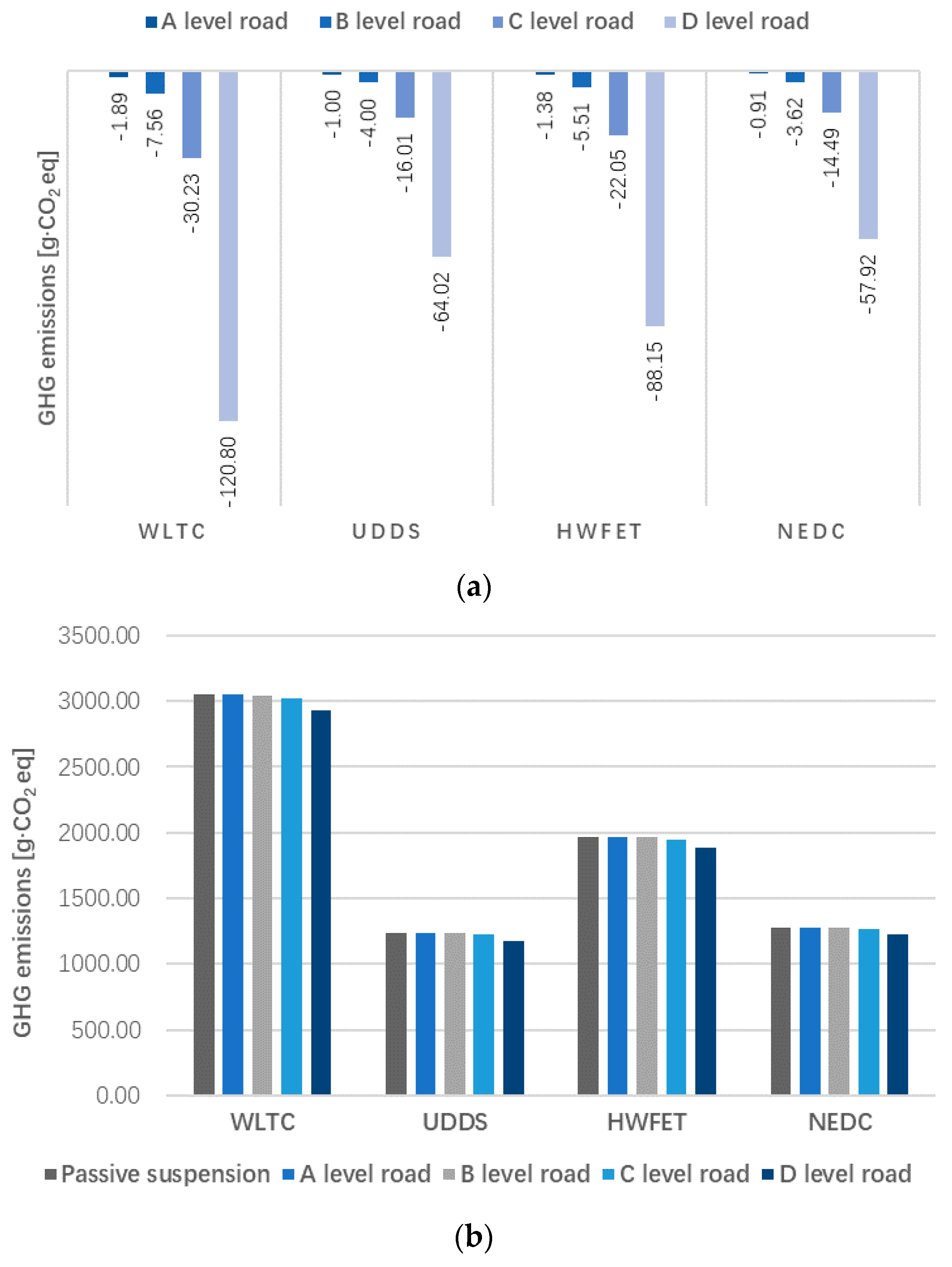

| Level | Degree of Roughness Gq(n0) (10−6m2/m−1) n0 = 0.1 m−1 | ||
|---|---|---|---|
| Lower Limit | Geometric Mean | Upper Limit | |
| A | 8 | 16 | 32 |
| B | 32 | 64 | 128 |
| C | 128 | 256 | 512 |
| D | 512 | 1024 | 2048 |
| Powertrain | Regenerative Suspension | ||
|---|---|---|---|
| Parameter | Value | Parameter | Value |
| m | 1521 kg | mb | 1398 kg |
| g | 9.8066 m/s2 [25] | Ip | 2240 kg·m2 |
| Cr | 1.75 [25] | Ir | 380 kg·m2 |
| c1 | 0.0328 [25] | mwA/mwB | 40.5 kg |
| c2 | 4.575 [25] | mwC/mwD | 45.4 kg |
| ρAir | 1.2256 kg/m3 [29] | ksA/ksB | 17 kN/m |
| Af | 2.3316 m2 [29] | ksC/ksD | 22 kN/m |
| CD | 0.28 [29] | kti1 | 192 kN/m |
| ηDriveline | 92% [30] | lf | 1.25 m |
| ηElectric_motor | 91% [25,31] | lr | 1.51 m |
| ηBattery | 90% [32] | Bf/Br | 1.48 m |
| PAuxiliary | 700 W [33] | ϕ | 120 N·A [34] |
| r | 2 Ω [34] | ||
| Indicator | Baseline |
|---|---|
| RMS value of body vertical acceleration (m/s2) | 0.64 |
| RMS value of tyre dynamic load (N) | 416.48 |
| RMS value of suspension deflection (m) | 0.0065 |
| WTW GHG emissions (g CO2eq) | 0 |
| Indicator | Before Switching (%) | After Switching (%) |
|---|---|---|
| Body vertical acceleration | 29.33 | 5.96 |
| Tyre dynamic load | −30.80 | 0.80 |
| Case | Driving Cycle | Road Level |
|---|---|---|
| 1 | 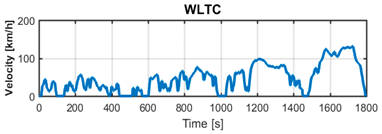 | A |
| 2 | B | |
| 3 | C | |
| 4 | D | |
| 5 | 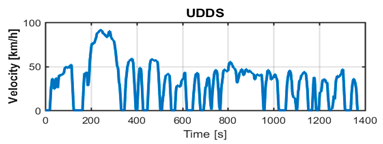 | A |
| 6 | B | |
| 7 | C | |
| 8 | D | |
| 9 | 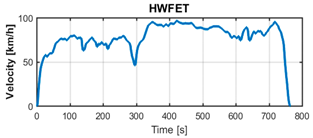 | A |
| 10 | B | |
| 11 | C | |
| 12 | D | |
| 13 |  | A |
| 14 | B | |
| 15 | C | |
| 16 | D |
© 2019 by the authors. Licensee MDPI, Basel, Switzerland. This article is an open access article distributed under the terms and conditions of the Creative Commons Attribution (CC BY) license (http://creativecommons.org/licenses/by/4.0/).
Share and Cite
Hu, X.; Sun, J.; Chen, Y.; Liu, Q.; Gu, L. Considering Well-to-Wheels Analysis in Control Design: Regenerative Suspension Helps to Reduce Greenhouse Gas Emissions from Battery Electric Vehicles. Energies 2019, 12, 2594. https://doi.org/10.3390/en12132594
Hu X, Sun J, Chen Y, Liu Q, Gu L. Considering Well-to-Wheels Analysis in Control Design: Regenerative Suspension Helps to Reduce Greenhouse Gas Emissions from Battery Electric Vehicles. Energies. 2019; 12(13):2594. https://doi.org/10.3390/en12132594
Chicago/Turabian StyleHu, Xu, Jinwei Sun, Yisong Chen, Qiu Liu, and Liang Gu. 2019. "Considering Well-to-Wheels Analysis in Control Design: Regenerative Suspension Helps to Reduce Greenhouse Gas Emissions from Battery Electric Vehicles" Energies 12, no. 13: 2594. https://doi.org/10.3390/en12132594
APA StyleHu, X., Sun, J., Chen, Y., Liu, Q., & Gu, L. (2019). Considering Well-to-Wheels Analysis in Control Design: Regenerative Suspension Helps to Reduce Greenhouse Gas Emissions from Battery Electric Vehicles. Energies, 12(13), 2594. https://doi.org/10.3390/en12132594




